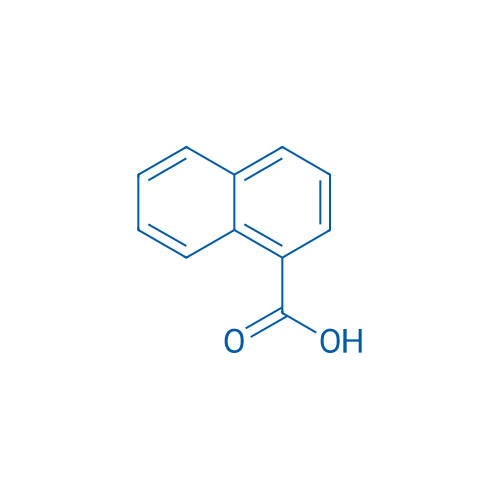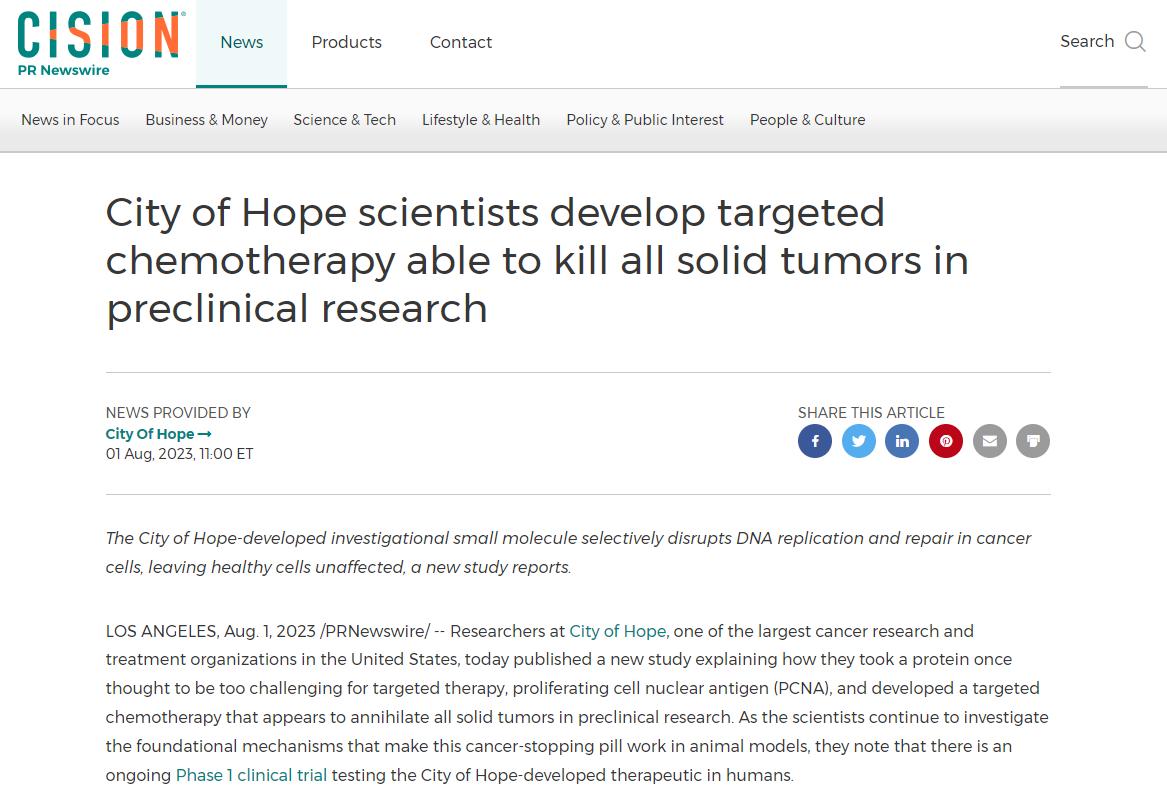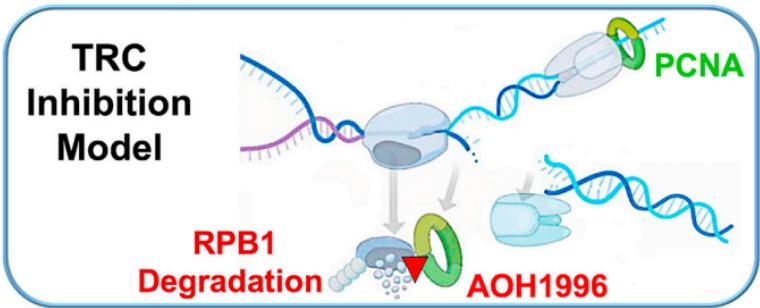How BLD Helps
AOH1996: Targeted Chemotherapy for Solid Tumor Eradication
03 August 2023

1-Naphthoic acid

m-Methoxyphenol

2-(3-Methoxyphenoxy)aniline hydrochloride

H-Gly-OH

1-Fluoro-2-nitrobenzene

1-Naphthoic acid

m-Methoxyphenol

2-(3-Methoxyphenoxy)aniline hydrochloride

H-Gly-OH
The groundbreaking news of a "cancer-killing pill" called AOH1996 entering Phase I clinical trials has brought new hope to cancer patients and their families worldwide.
AOH1996 is an orally available small molecule inhibitor PCNA (Proliferating Cell Nuclear Antigen) inhibitor, claimed to have the ability to kill all solid malignant tumors. Its chemotherapy action operates with a unique mechanism that reduces common side effects associated with traditional chemotherapy, such as infections, fever, nausea, and vomiting, thus improving the quality of life for patients.
Developed by scientists at City of Hope, one of the largest cancer research and treatment organizations in the United States, the preclinical results of AOH1996 were officially announced on August 1st. The preliminary research has been published in the journal "Cell Chemical Biology."

PCNA is a protein discovered independently by two different research groups. Miyachi and colleagues detected an autoantigen in the serum of some systemic lupus erythematosus patients and named it PCNA because it was found in the nuclei of cells undergoing cell division. On the other hand, Bravo and Celis identified a protein synthesized during the S phase of the cell cycle and named it cell cycle antigen.
PCNA is an essential factor in DNA replication and repair. It forms a homotrimeric ring that encircles DNA and slides along it, tethering DNA polymerases and other DNA editing enzymes. It interacts with certain regulatory proteins through an area called the PIP-box (PCNA Interacting Protein box). For example, PCNA interacts with DNA polymerase Pol δ, positioning Pol δ's catalytic core above the PCNA ring and allowing DNA double helix to be nearly perpendicular to the PCNA trimeric pore surface for interaction with Pol δ.

According to the description of Patent WO2017049206A1, PCNA lies at the center of essential cellular processes, including DNA replication, cell cycle control, and DNA damage repair, which are fundamental to the proliferation and survival of cancer cells. A novel cancer-associated PCNA (referred to as caPCNA) has been previously reported, which is widely expressed in various cancer cells and tumor tissues but not significantly expressed in non-malignant cells. Research has found that the specific antigen site of caPCNA is located between L126 and Y133 within the interdomain connecting loop of PCNA.
Through computer modeling and drug chemistry techniques, a potent PCNA inhibitor called AOH1160 was designed to target the partially delineated binding pocket in the L126-Y133 region of PCNA. AOH1160 demonstrated selective killing of neuroblastoma (NB) cells while showing no significant toxicity to non-malignant cells. AOH1996, developed as a lead compound based on AOH1160, exhibited improved solubility and maintained the same mechanism of action as AOH1160.
With an extensive Molecular Building Blocks Library, BLD keeps a close eye on advancements in new drug research and proactively stocks the essential molecular building blocks needed for drug development in the field of high-priority disease targets. Additionally, BLD maintains a specific focus on the drugs currently under research that target PCNA.

BLD Related Building Blocks:
The research by Gu, Long et al. provides further insight into the pharmacological mechanism of AOH1996. It has been found that AOH1996 can trigger double-strand breaks (DSBs) during DNA replication by stabilizing the complex formed by chromatin-PCNA-RNA polymerase II (RNAPII) and by dissociating PCNA from the chromatin undergoing transcription. This ultimately leads to the inhibition of cancer cell replication or direct cell death. These findings shed light on how AOH1996 exerts its anticancer effects and highlight its potential as a promising therapeutic agent for cancer treatment.

References
[1]https://www.prnewswire.com/news-releases/city-of-hope-scientists-develop-targeted-chemotherapy-able-to-kill-all-solid-tumors-in-preclinical-research-301888576.html?d=1691030069688
[2]https://www.cityofhope.org/cancer-center-announces-first-patient-has-received-city-hopes-novel-potentially-cancer-stopping
[3]Small molecule targeting of transcription-replication conflict for selective chemotherapy Gu, Long et al. Cell Chemical Biology, Volume 0, Issue 0